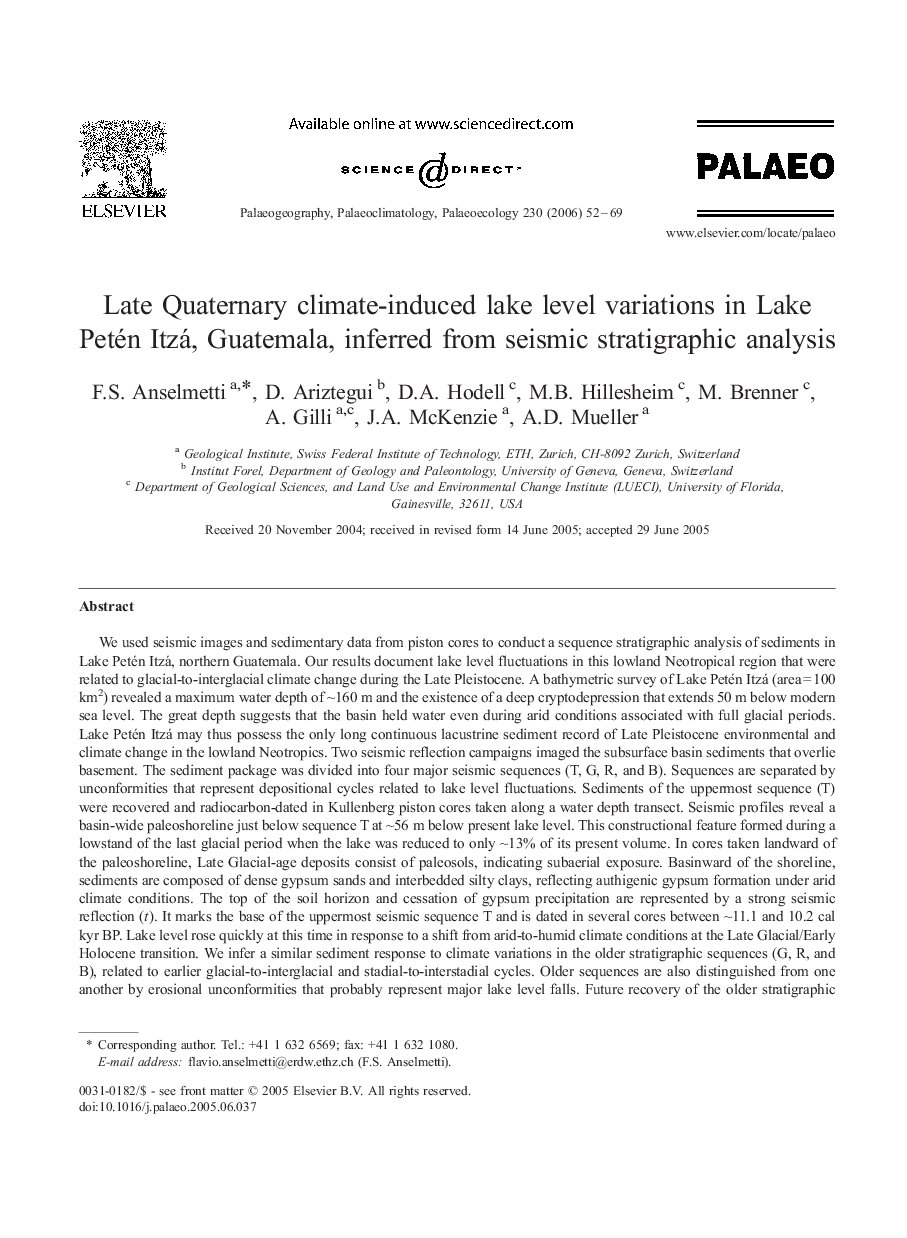| کد مقاله | کد نشریه | سال انتشار | مقاله انگلیسی | نسخه تمام متن |
|---|---|---|---|---|
| 4469618 | 1622381 | 2006 | 18 صفحه PDF | دانلود رایگان |

We used seismic images and sedimentary data from piston cores to conduct a sequence stratigraphic analysis of sediments in Lake Petén Itzá, northern Guatemala. Our results document lake level fluctuations in this lowland Neotropical region that were related to glacial-to-interglacial climate change during the Late Pleistocene. A bathymetric survey of Lake Petén Itzá (area = 100 km2) revealed a maximum water depth of ∼160 m and the existence of a deep cryptodepression that extends 50 m below modern sea level. The great depth suggests that the basin held water even during arid conditions associated with full glacial periods. Lake Petén Itzá may thus possess the only long continuous lacustrine sediment record of Late Pleistocene environmental and climate change in the lowland Neotropics. Two seismic reflection campaigns imaged the subsurface basin sediments that overlie basement. The sediment package was divided into four major seismic sequences (T, G, R, and B). Sequences are separated by unconformities that represent depositional cycles related to lake level fluctuations. Sediments of the uppermost sequence (T) were recovered and radiocarbon-dated in Kullenberg piston cores taken along a water depth transect. Seismic profiles reveal a basin-wide paleoshoreline just below sequence T at ∼56 m below present lake level. This constructional feature formed during a lowstand of the last glacial period when the lake was reduced to only ∼13% of its present volume. In cores taken landward of the paleoshoreline, Late Glacial-age deposits consist of paleosols, indicating subaerial exposure. Basinward of the shoreline, sediments are composed of dense gypsum sands and interbedded silty clays, reflecting authigenic gypsum formation under arid climate conditions. The top of the soil horizon and cessation of gypsum precipitation are represented by a strong seismic reflection (t). It marks the base of the uppermost seismic sequence T and is dated in several cores between ∼11.1 and 10.2 cal kyr BP. Lake level rose quickly at this time in response to a shift from arid-to-humid climate conditions at the Late Glacial/Early Holocene transition. We infer a similar sediment response to climate variations in the older stratigraphic sequences (G, R, and B), related to earlier glacial-to-interglacial and stadial-to-interstadial cycles. Older sequences are also distinguished from one another by erosional unconformities that probably represent major lake level falls. Future recovery of the older stratigraphic record by drilling in Lake Petén Itzá will provide ages for these older units and enable us to test the depositional model inferred from seismic stratigraphy.
Journal: Palaeogeography, Palaeoclimatology, Palaeoecology - Volume 230, Issues 1–2, 17 January 2006, Pages 52–69